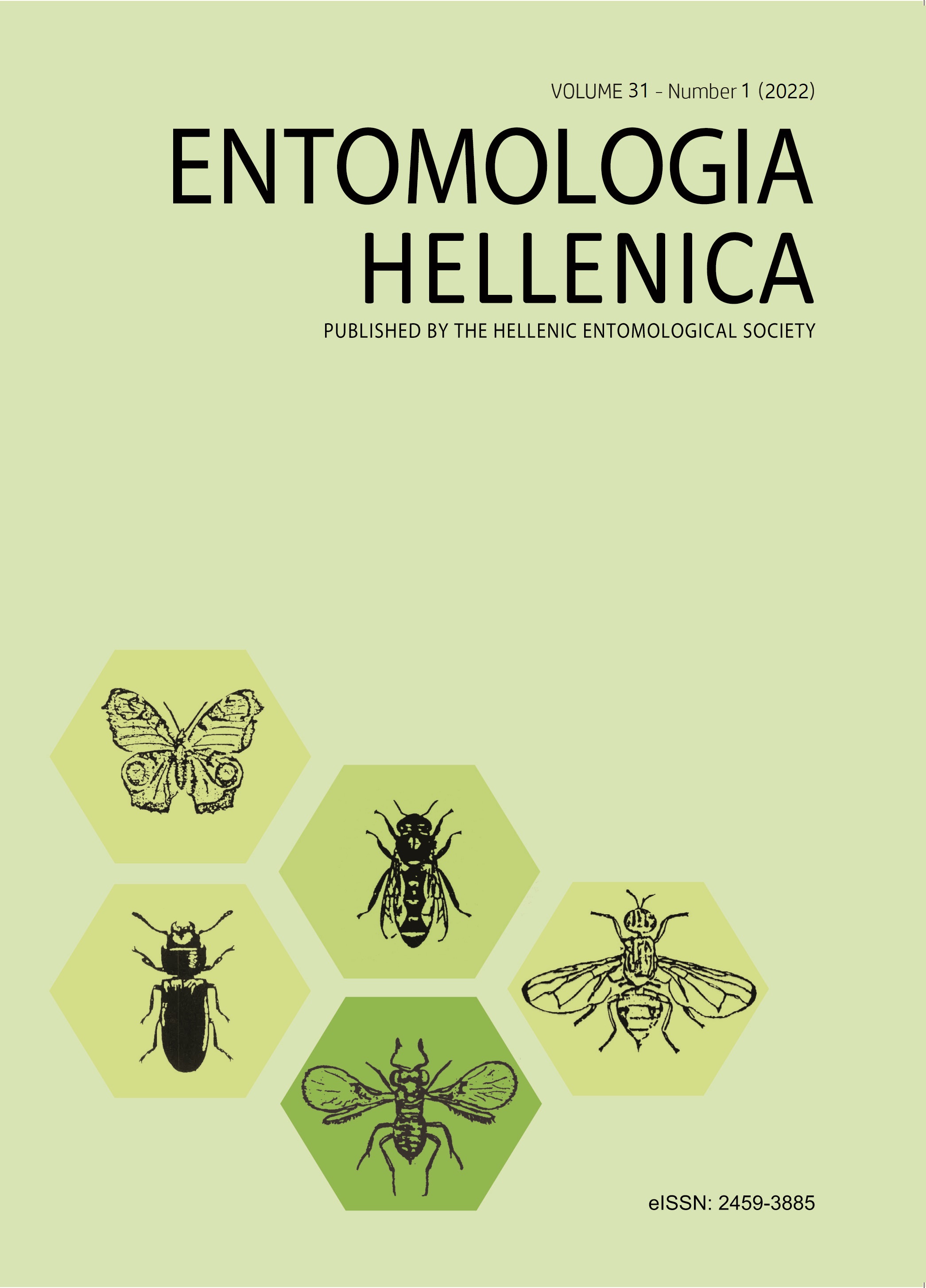Efficiency of Some Insecticides in Controlling Citrus Leafminer, Phyllocnistis citrella Stainton (Lepidoptera: Gracillariidae)
Περίληψη
The toxicity of four commercial insecticides (mineral oil, azadirachtin, phenthoate and abamectin) in addition to mint oil (variety of terpenoids), against the citrus leaf-miner, Phyllocnistis citrella, larvae, was tested under laboratory conditions using the leaf-dipping method. The bioassay data indicated that abamectin was the most toxic insecticide against P. citrella larvae, followed by azadirachtin, phenthoate, mint oil and finally mineral oil. On the other hand, field evaluation showed that the highest larval mortality was 94.79 and 83.87% induced by abamectin and azadirachtin, respectively, five days after the 2nd application. Mineral oil and phenthoate showed a 72.43 and 61.4% mortality respectively, at 11 days after the 2nd application, and finally mint oil, 49.82% three days after the 1st application.
Λεπτομέρειες άρθρου
- Πώς να δημιουργήσετε Αναφορές
-
Faskha, S. (2022). Efficiency of Some Insecticides in Controlling Citrus Leafminer, Phyllocnistis citrella Stainton (Lepidoptera: Gracillariidae). ENTOMOLOGIA HELLENICA, 31(1), 19–29. https://doi.org/10.12681/eh.28188
- Ενότητα
- Articles

Αυτή η εργασία είναι αδειοδοτημένη υπό το CC Αναφορά Δημιουργού – Μη Εμπορική Χρήση – Παρόμοια Διανομή 4.0.
Authors who publish with this journal agree to the following terms:
Authors retain copyright and grant the journal right of first publication with the work simultaneously licensed under a Creative Commons 4.0 license.
Authors are able to enter into separate, additional contractual arrangements for the non-exclusive distribution of the journal's published version of the work (e.g. post it to an institutional repository or publish it in a book), with an acknowledgement of its initial publication in this journal. Authors are permitted and encouraged to post their work online (preferably in institutional repositories or on their website) prior to and during the submission process, as it can lead to productive exchanges, as well as earlier and greater citation of published work.



